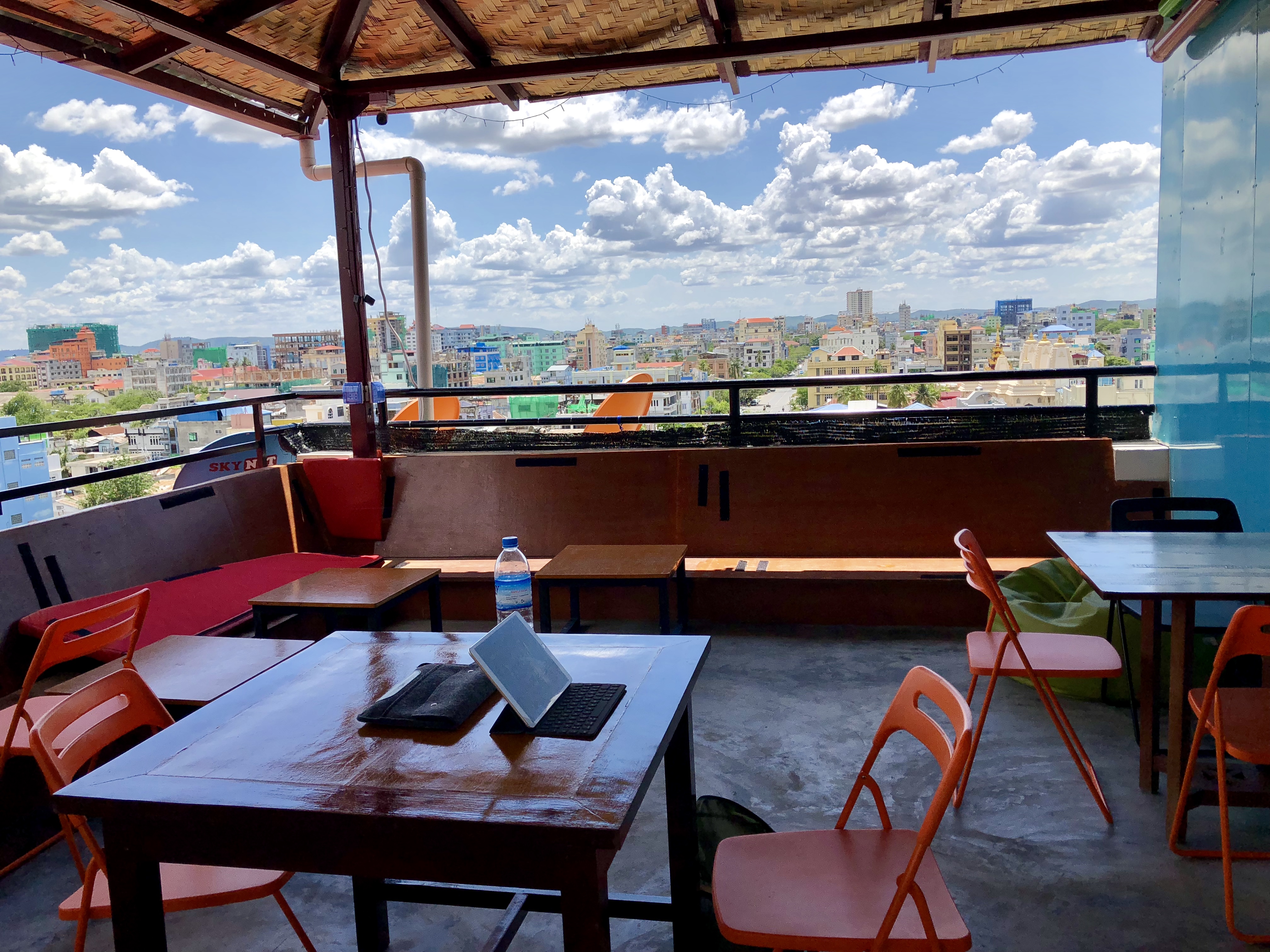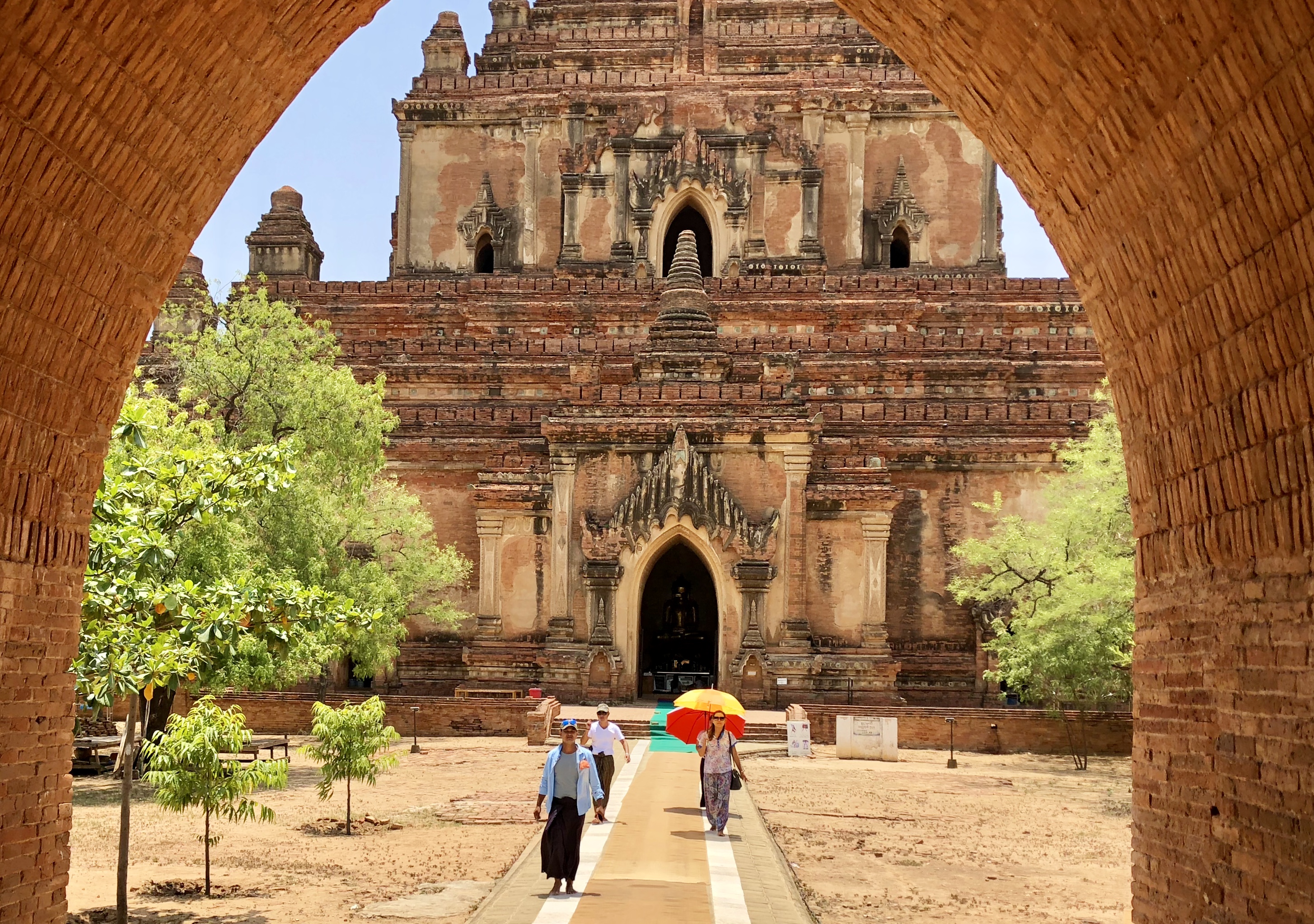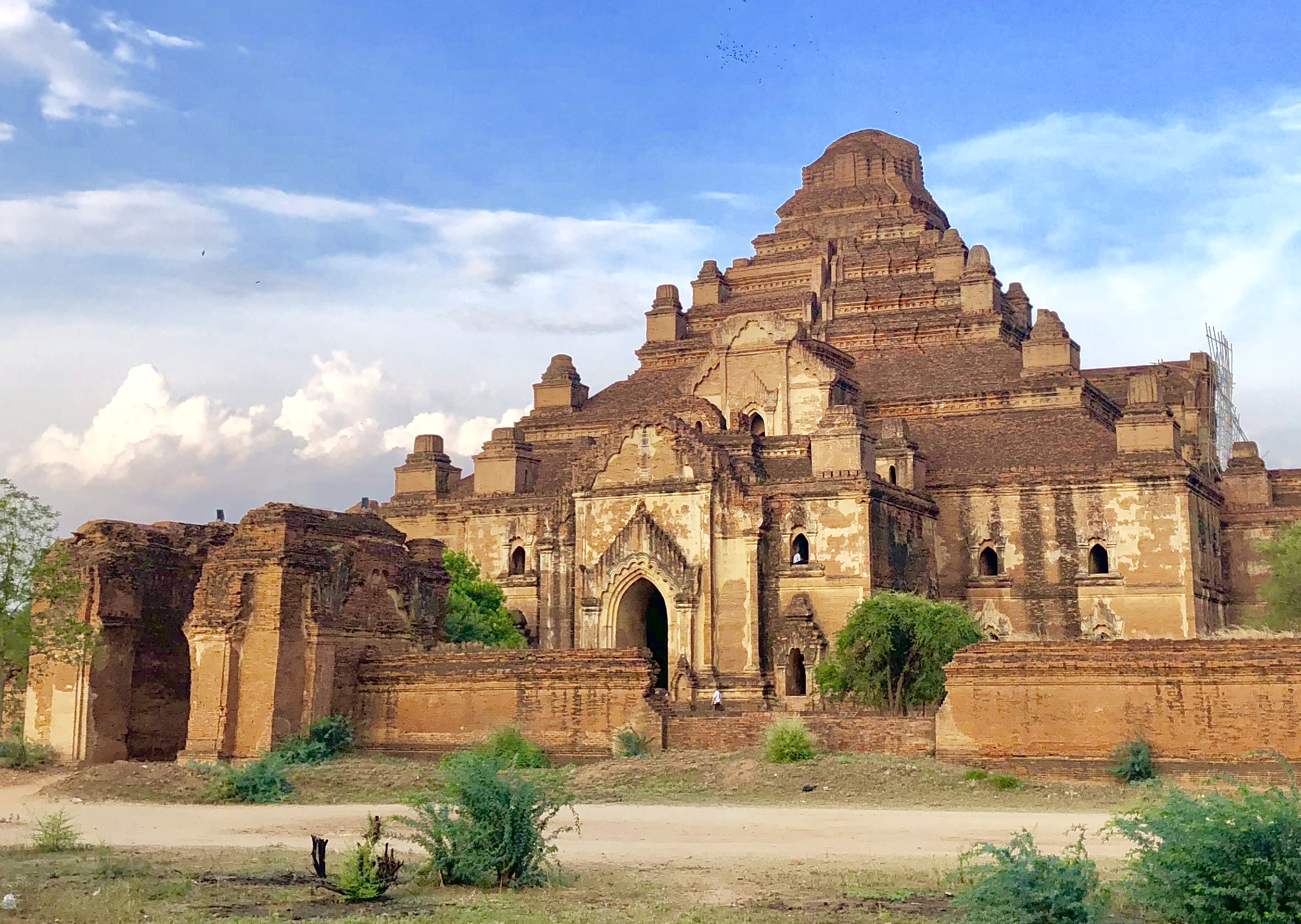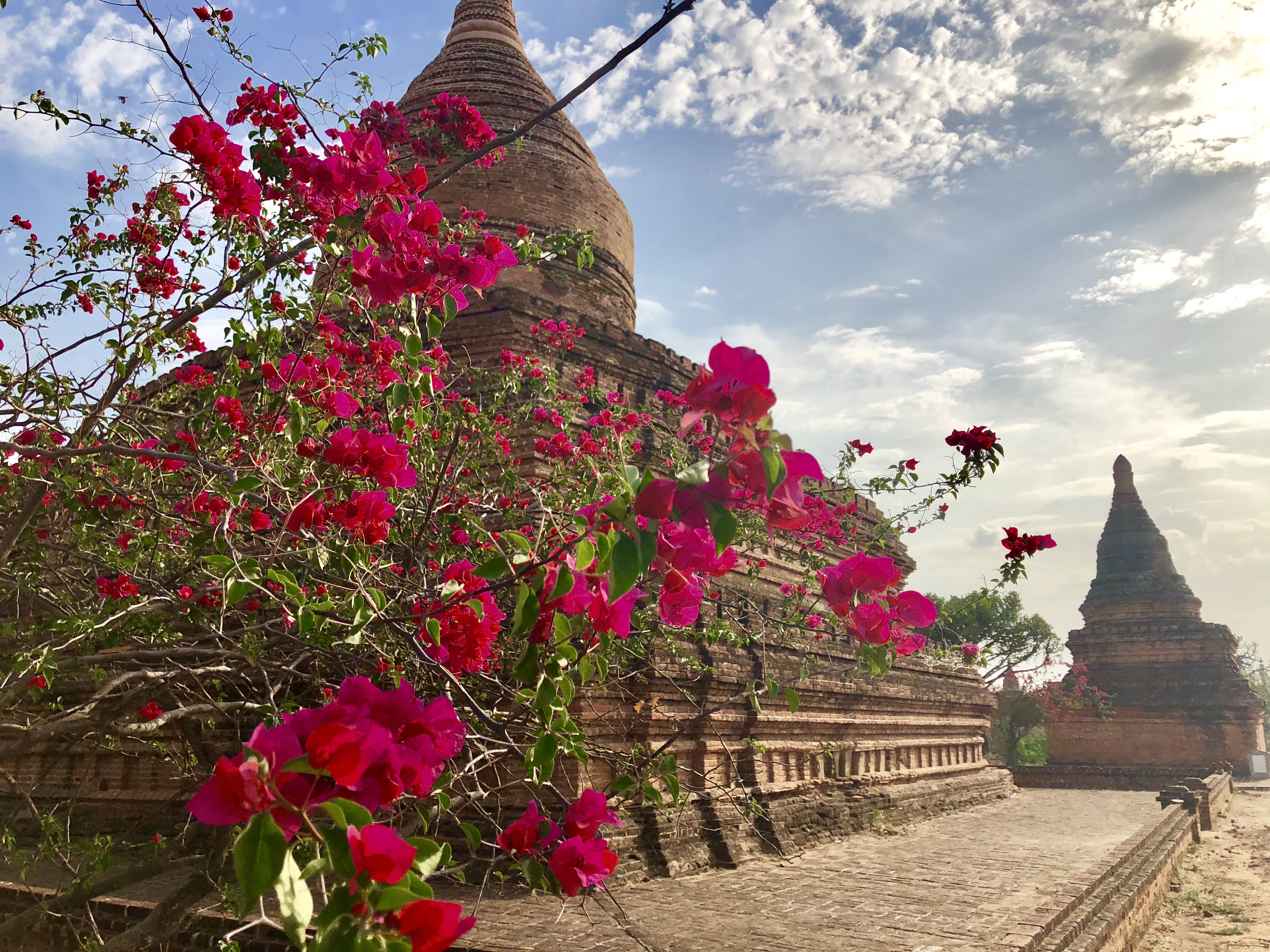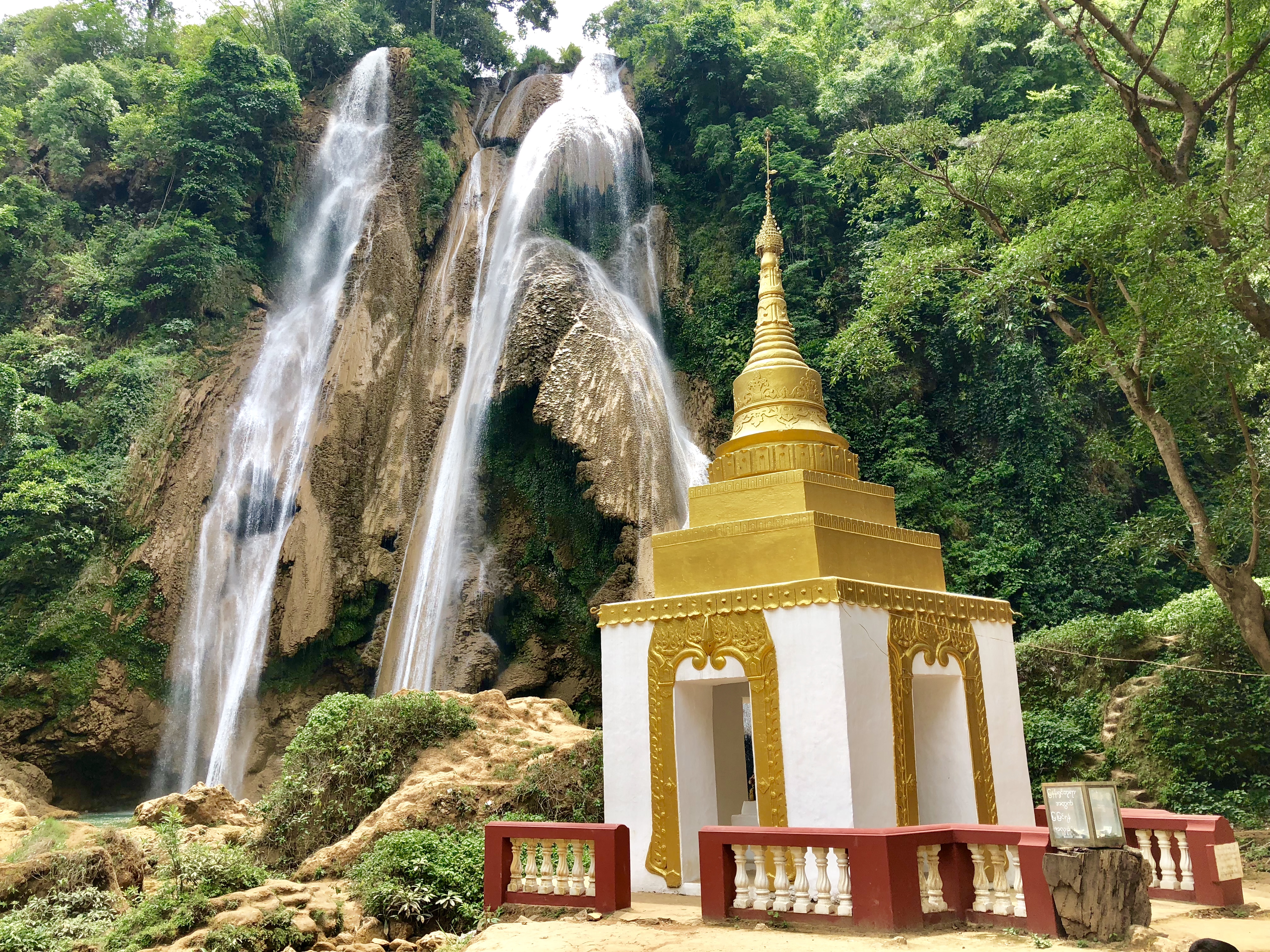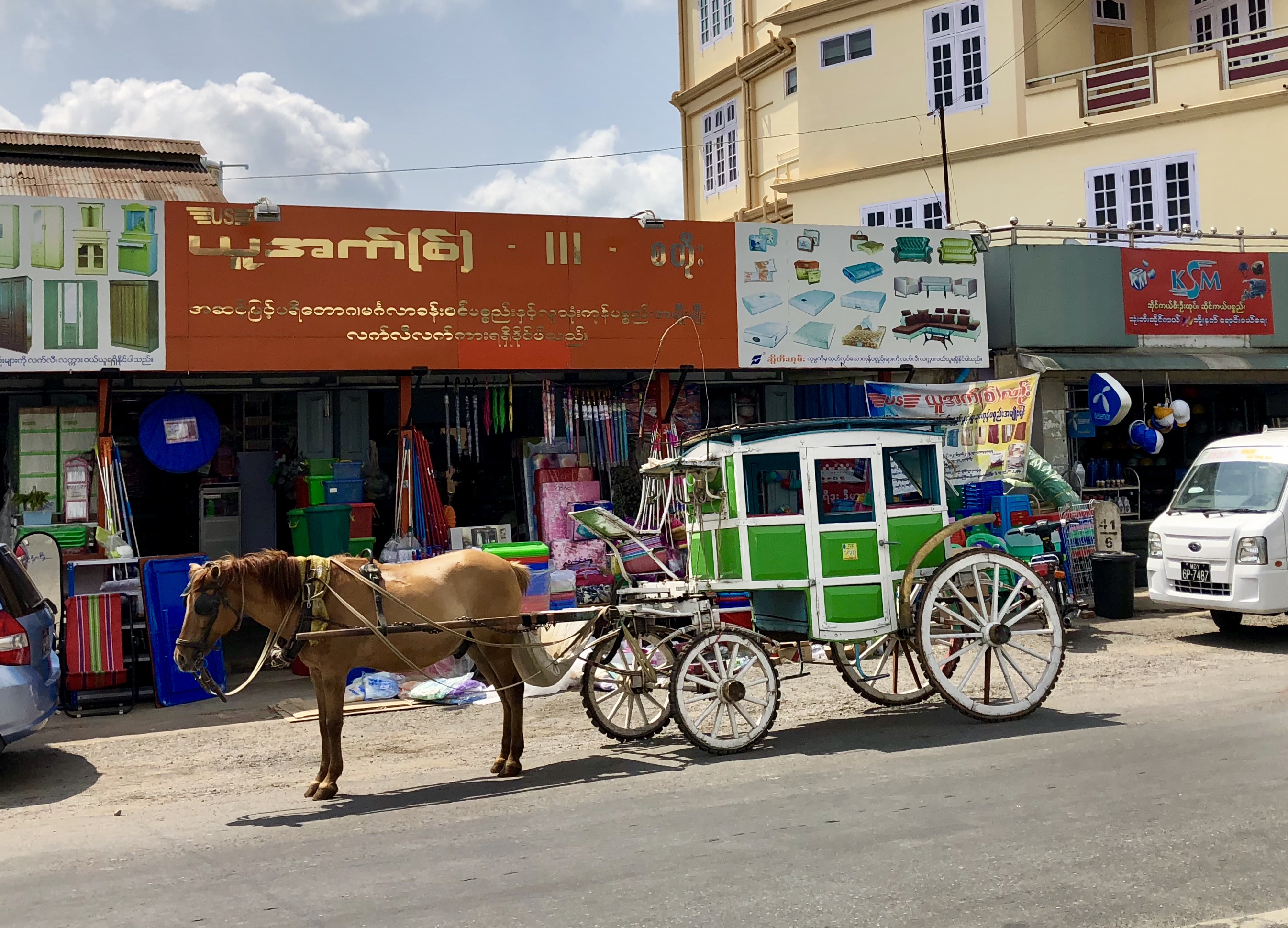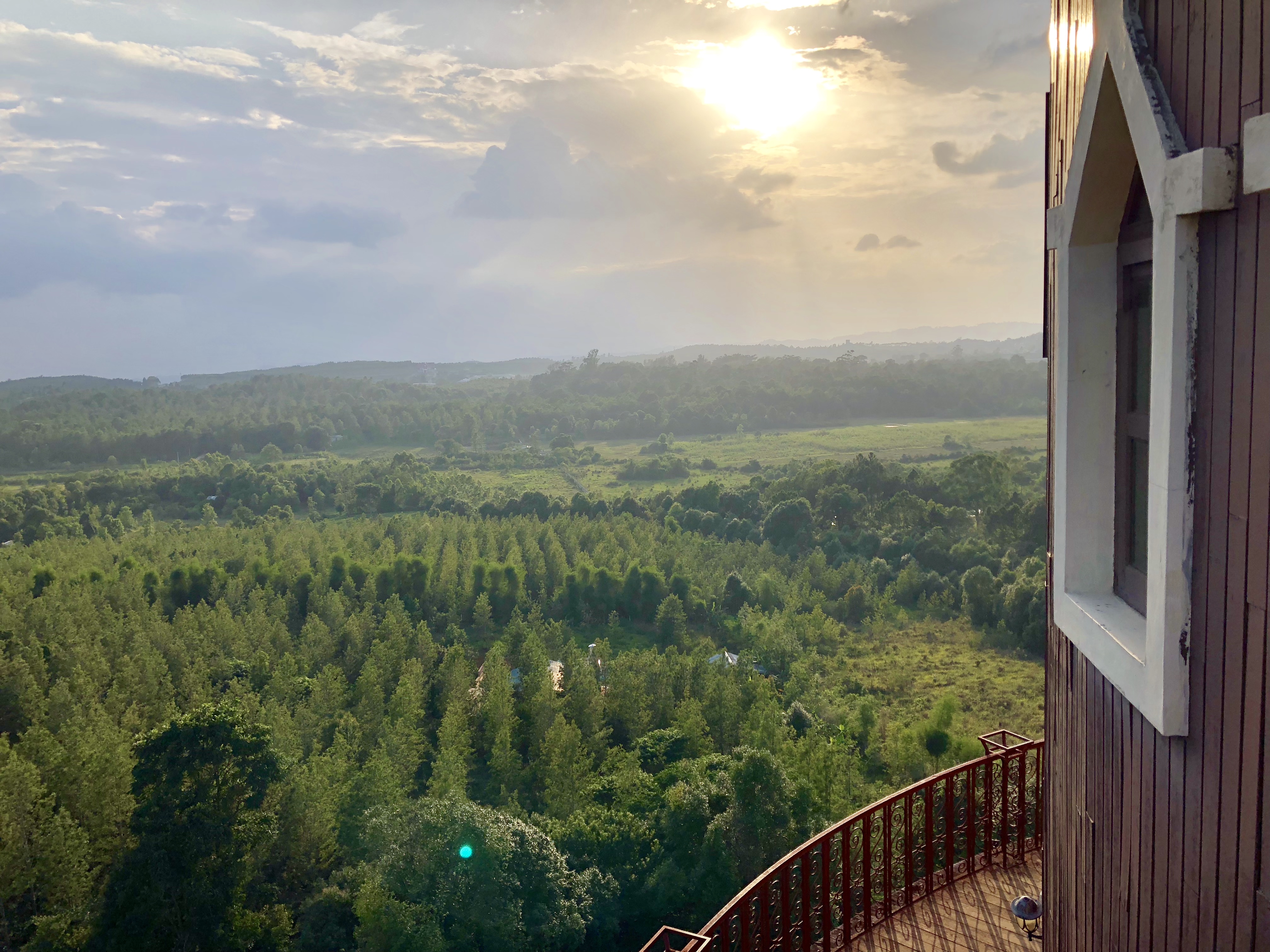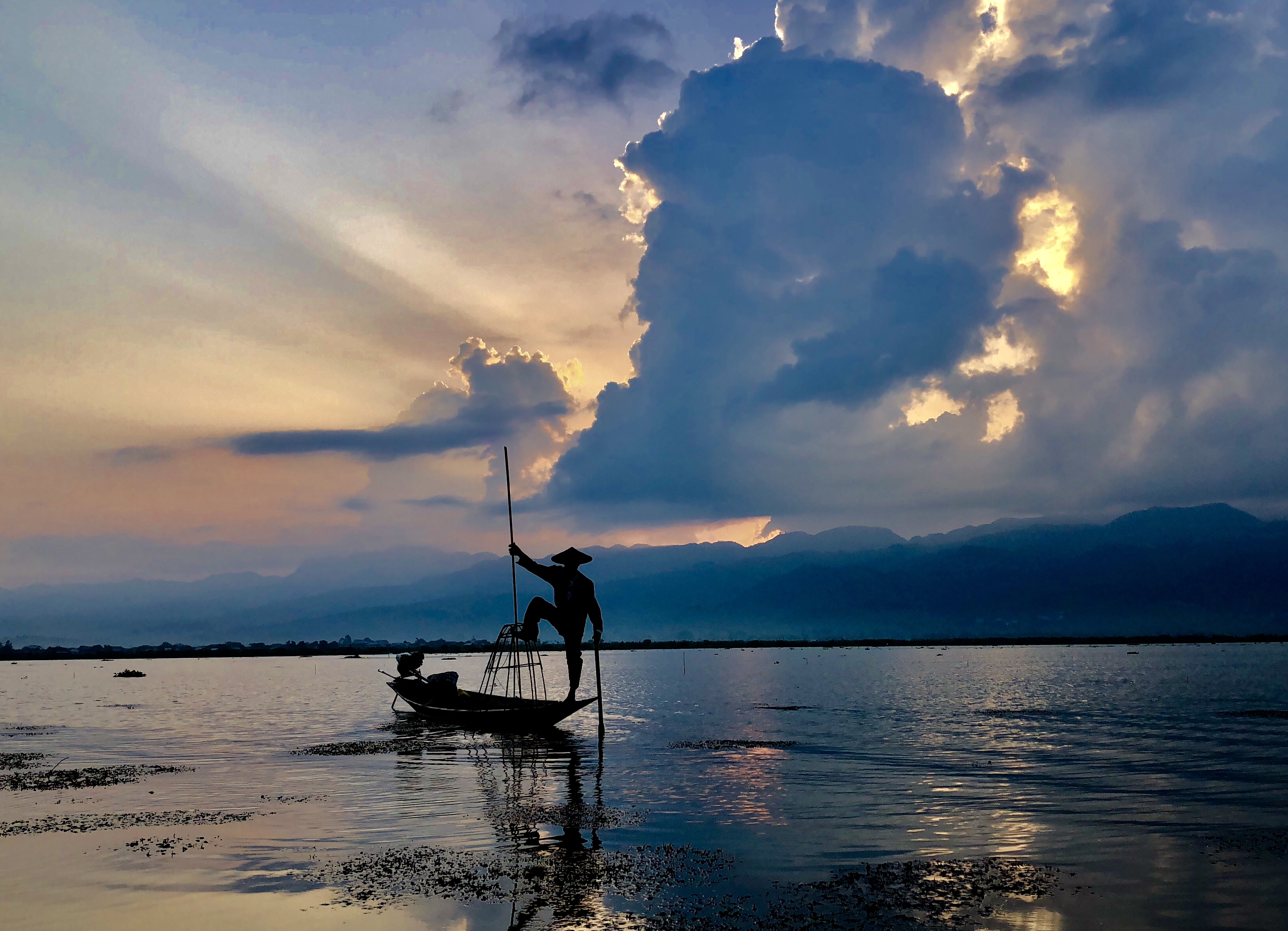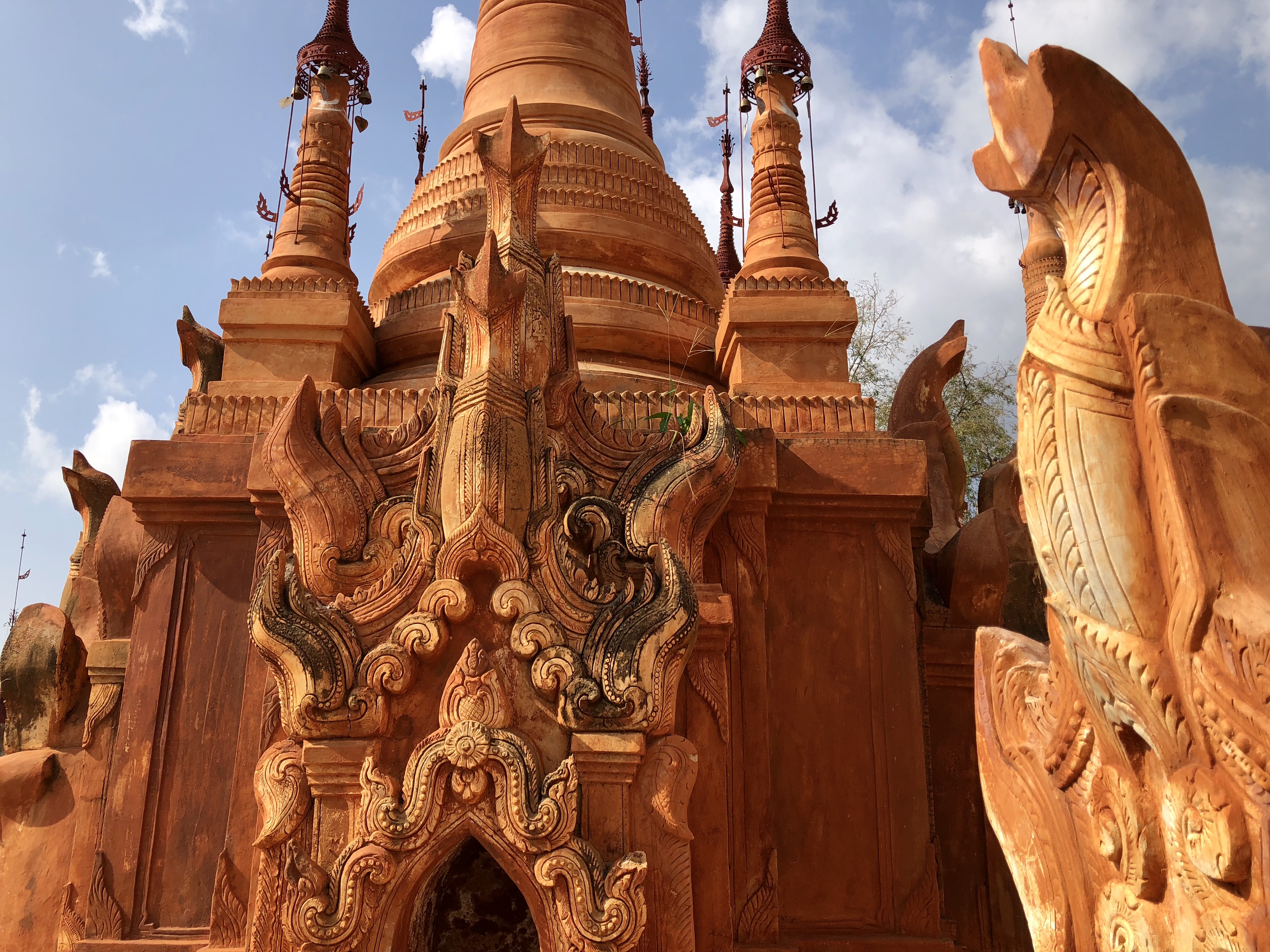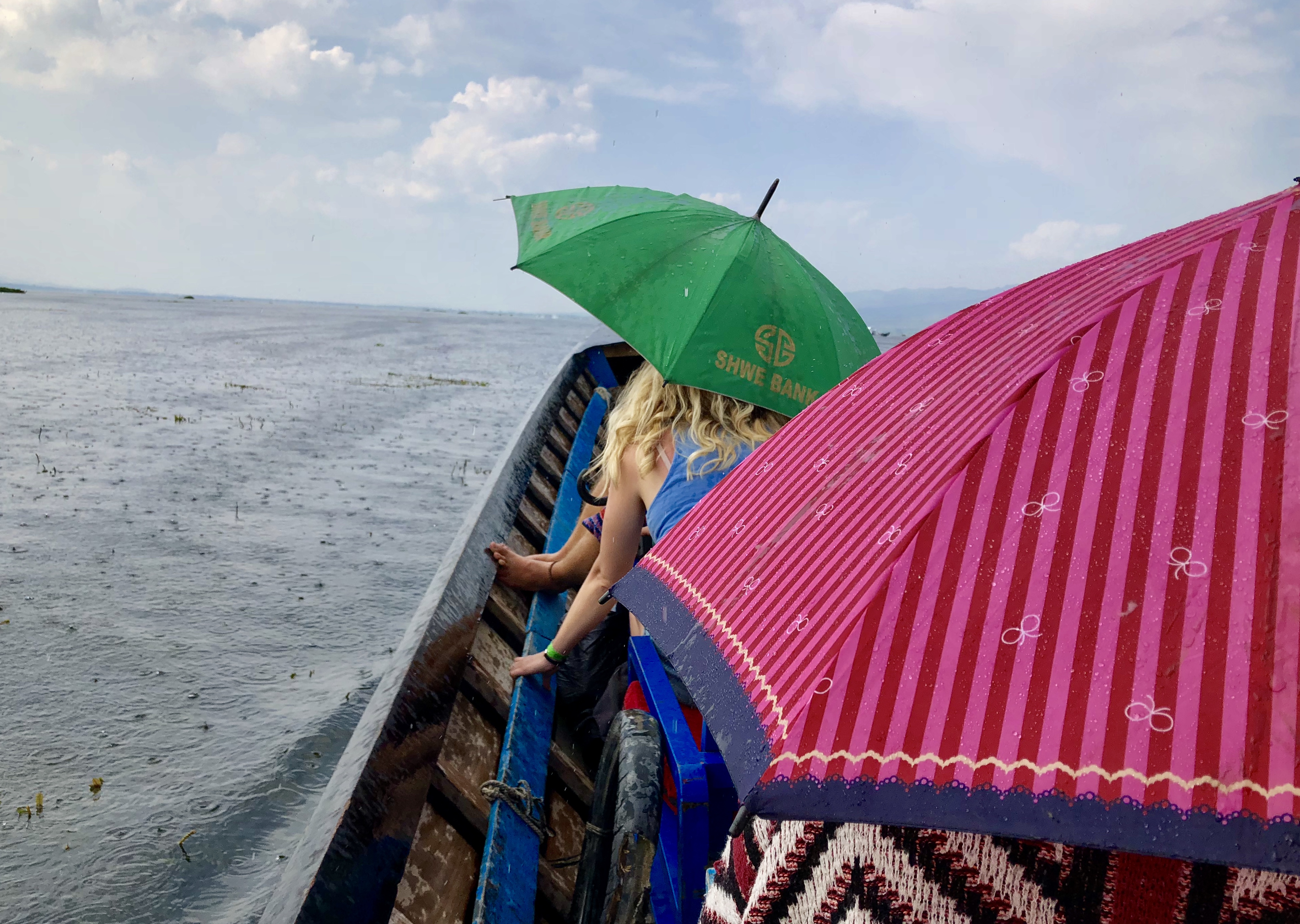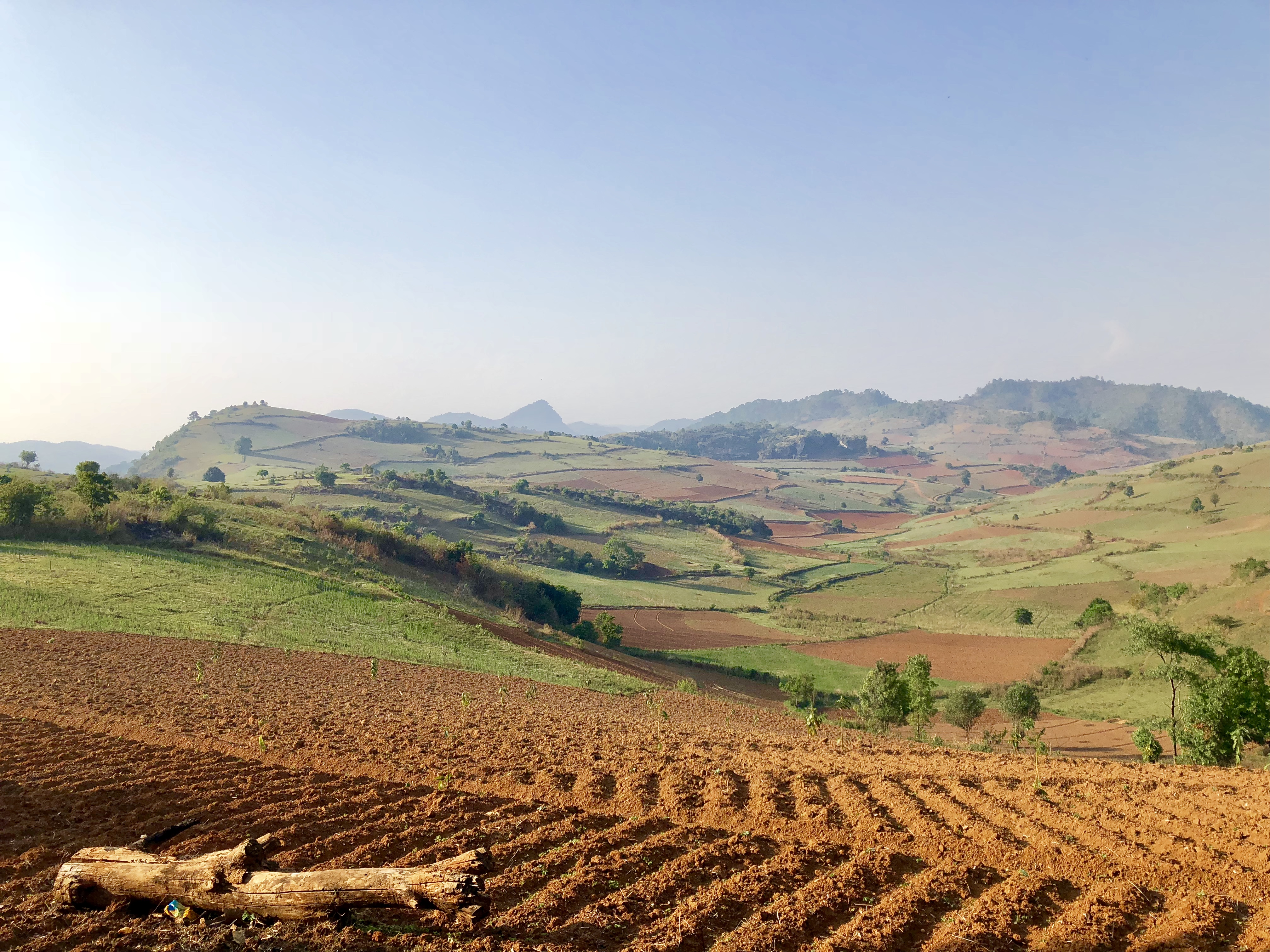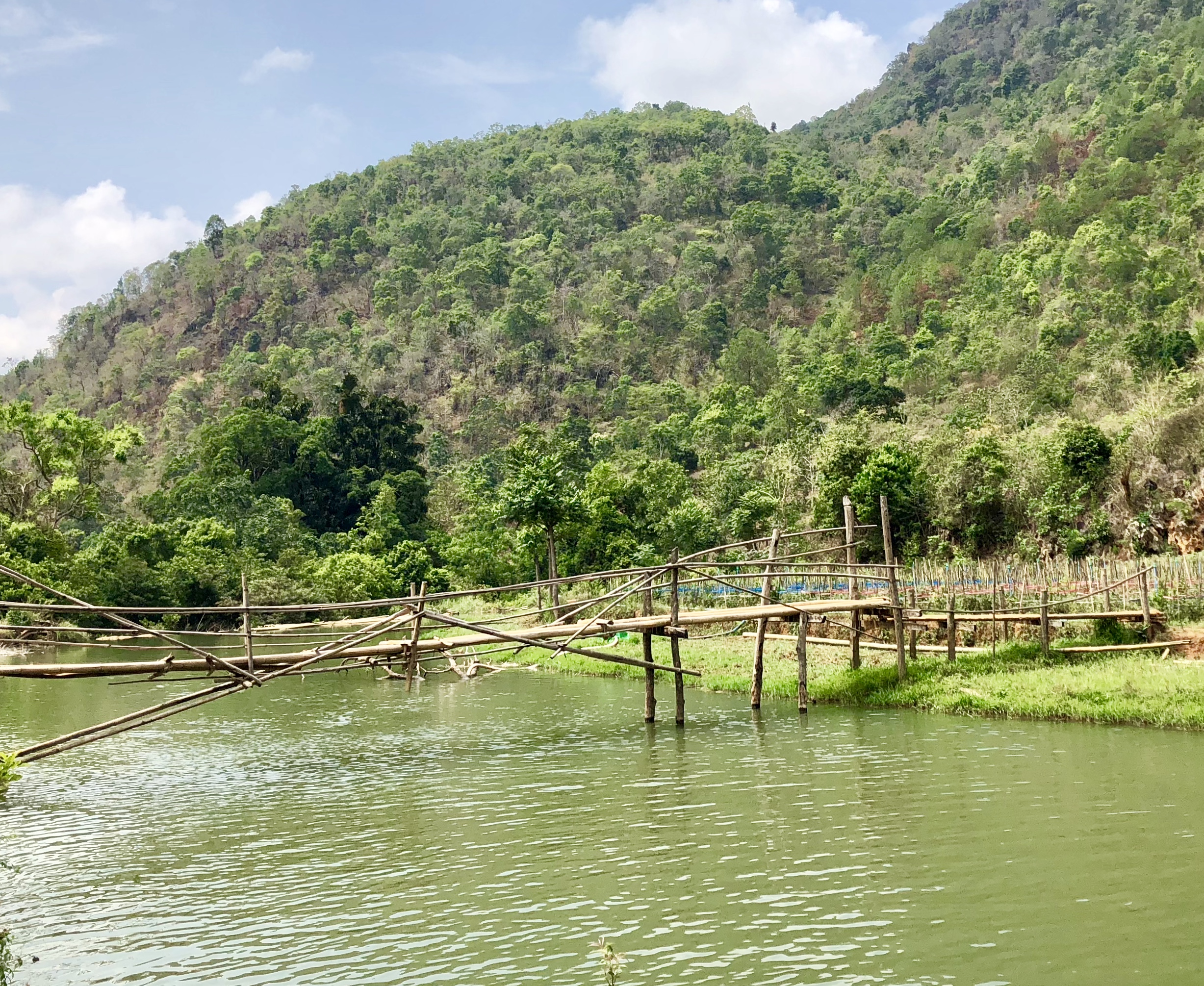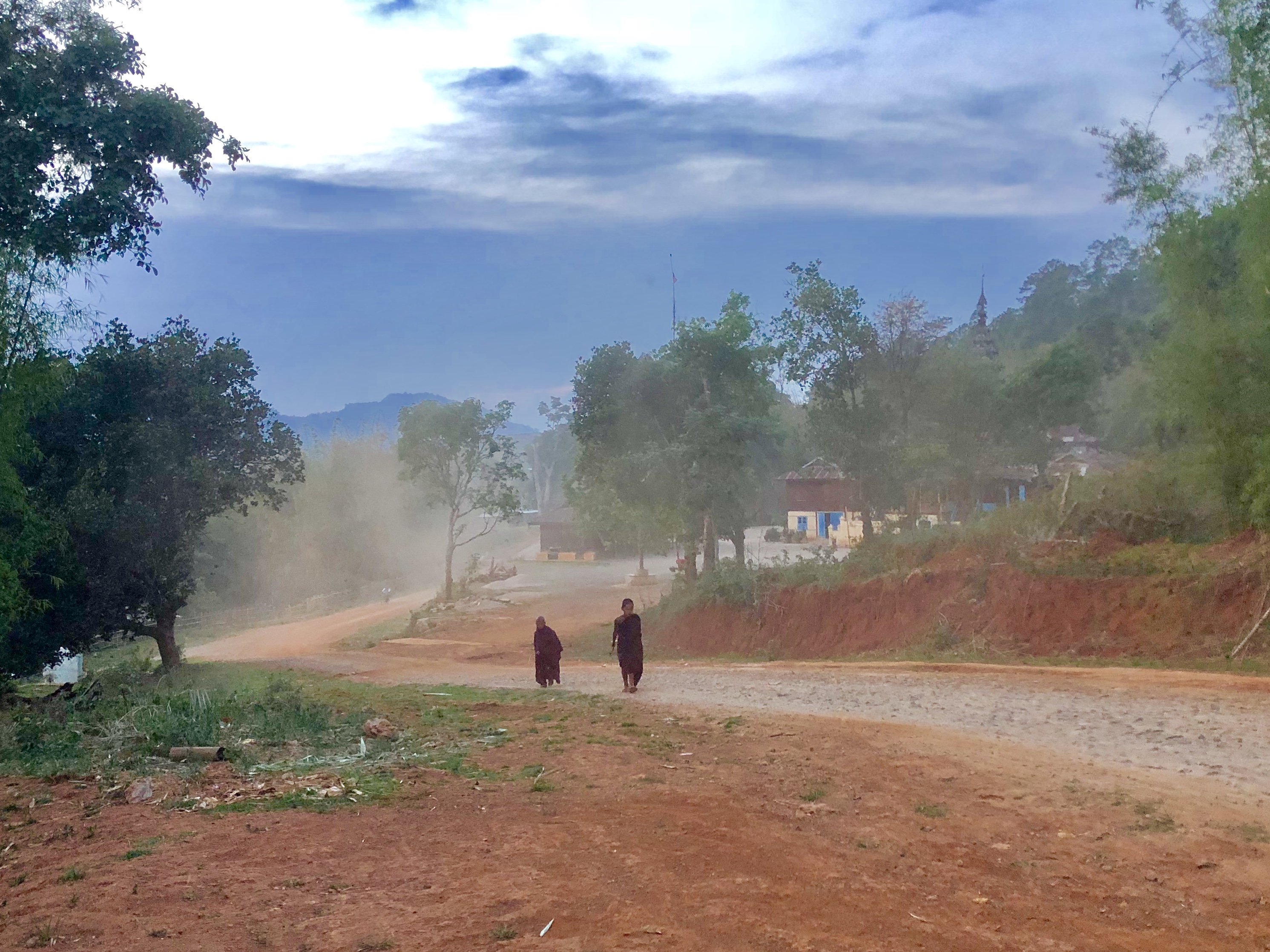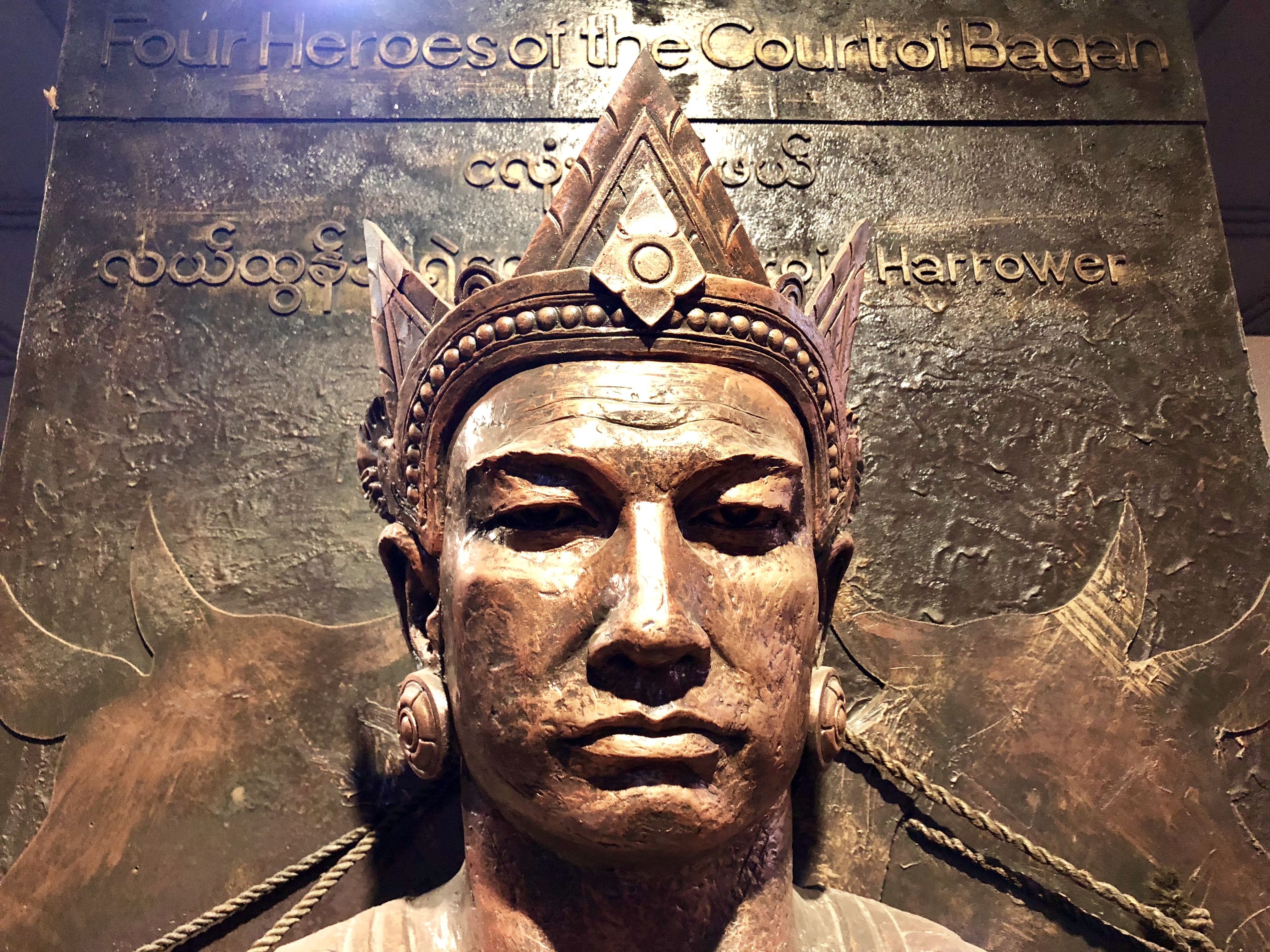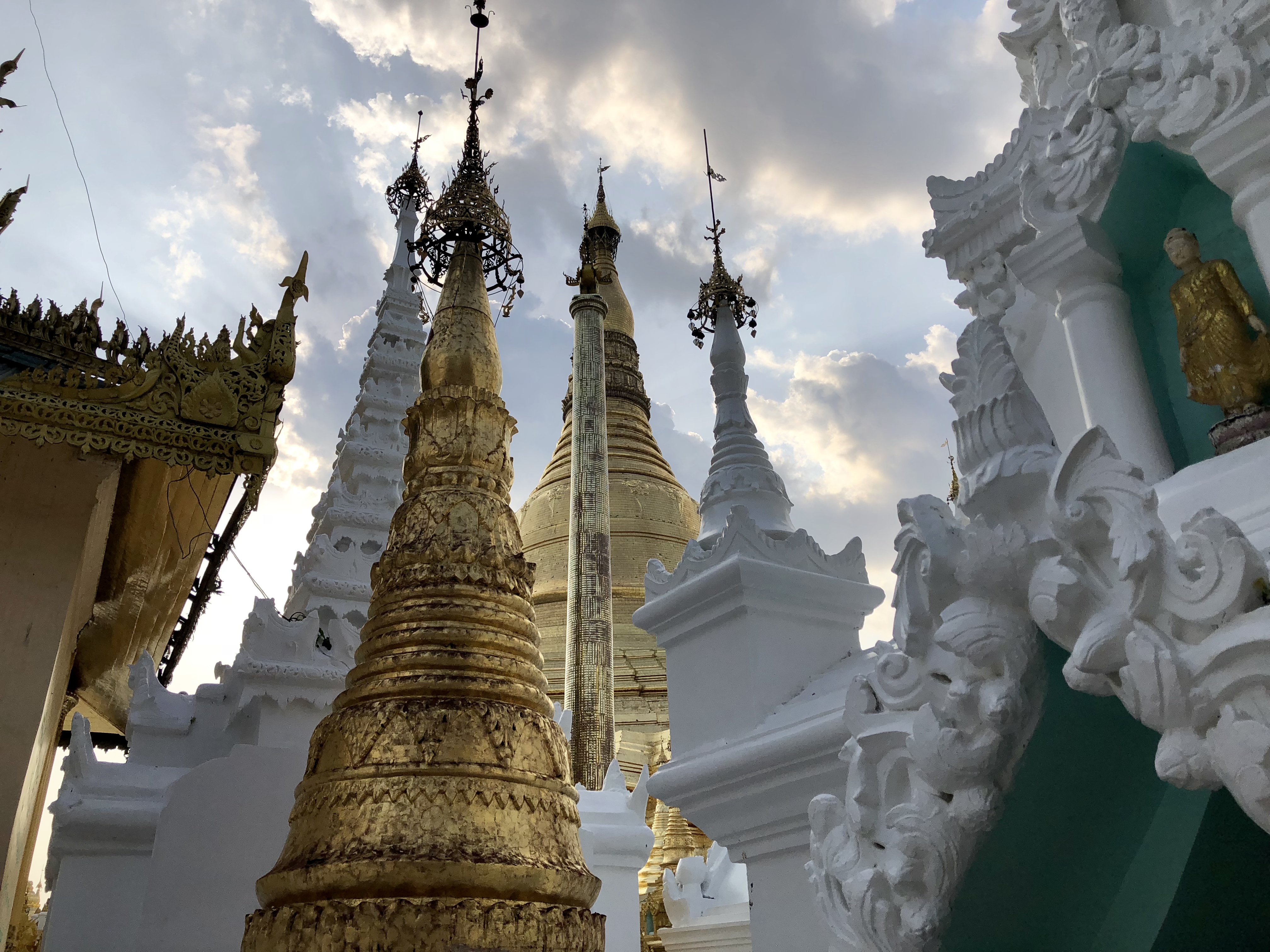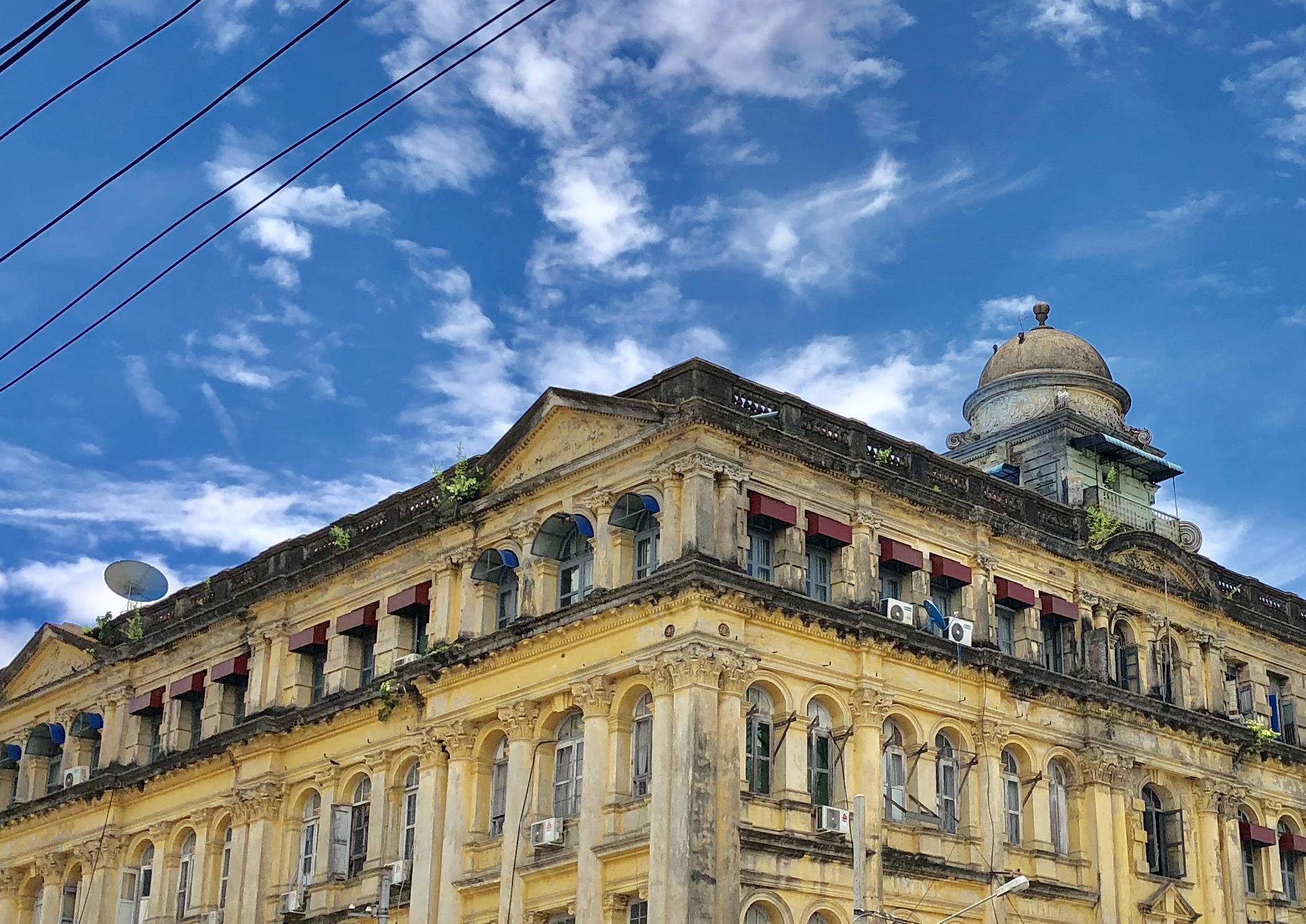Am Abschluss meiner Reise durch Myanmar steht Mandalay, die Stadt mit dem so schön klingenden Namen. Mein urpsünglicher Plan war, mit dem Boot von Bagan hier her zu fahren. Doch in der Trockenzeit ist der Wasserstand im Fluss nicht mehr hoch genug, so dass ich wieder mal mit dem einheimischen Bus unterwegs bin. Ein Ostello Bello Hostel gibt es auch in Mandalay und so entscheide ich mich aufgrund meiner guten Erfahrungen auch hier für diese Unterkunft. Meine Zimmernachbarn aus Bagan treffe ich dort ebenfalls wieder und gemeinsam fahren wir zur etwas ausserhalb gelegenen U Bein Brücke, einer aus über 1000 Teakholzpfählen gebaute Landverbindung über den Taungthaman See. Am Wochenende sind jede Menge Burmesen am See unterwegs und entsprechend hoch ist der Andrang. Doch nach dem Sonnenuntergang wandelt sich das Bild und die Brücke wird von einer faszinierenden Dämmerungsstimmung eingehüllt. Das entschwindende Licht zaubert ein beeindruckendes Potpourri aus schnell wechselnden Farbspektren in den sich verdunkelnden Himmel und langsam senkt sich eine beruhigende Nachtatmosphäre über dem See herab.
Mandalay, the city with this beautiful sounding name, is the last station of my travelling around Myanmar. It was my plan to go by boat here, but it’s not enough water inside the river at the dry season, so I had to use the local bus again. There is another Ostello Bello hostel in Mandalay and because of my positive experiences, I decide to stay here too. I also met my room mates from Bagan here again and we’re going to visit the famous U Bein Bridge outside the city together. It’s a land connection across the Taungthaman Lake, built with more than 1000 piles made of teak wood. At first it feels like rush, because of so many burmese people visiting the lake at the weekend. But at sunset the picture changes and the bridge started to be cocooned in a fascinating mood of dusk. The vanishing light conjures an impressive potpourri of a fast changing range of colors into the darkening sky and a calming nightly atmosphere is going down slowly around the lake.
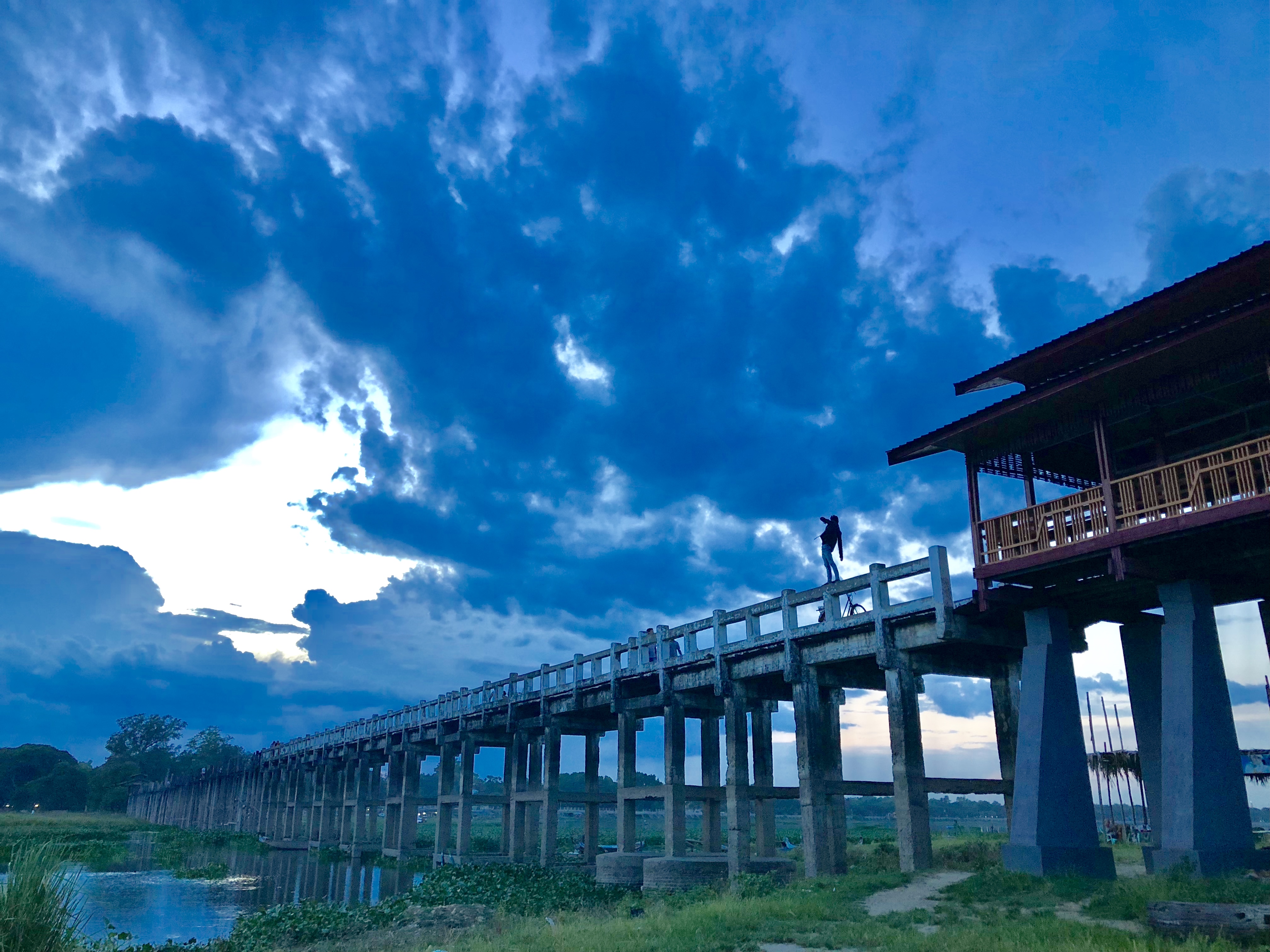
Gerade in der frühen Morgen- und Abendzeit entfaltet Mandalay einen besonderen Charme. Dazwischen ist es ohnehin zu heiss für etwaige Unternehmungen und jegliche Aktivität draussen wird schnell zu einer Strapaze. So warte ich erneut die spätere Tageszeit ab, um die vielen langen Treppen zum Mandalay Berg hinaufzusteigen. Von oben eröffnet sich ein grandioser Rundblick über die Stadt und wieder sind es die Farbspiele der Natur, welche mich in ihren Bann ziehen und mich den Ausklang des Tages wie die entspannte Beobachtung eines schönen Kunstwerkes geniessen lassen. Wie eine leuchtende Treppe in den Himmel wirkt der Weg am Berghang und mein Hinabgehen fühlt sich wie ein Wiedereintauchen aus höheren Bewusstseinsebenen in die irdische Realität an. Ein traditionell burmesisches Essen mit jeder Menge Beilagen und ein intensiver lebensphilosophischer Austausch mit meiner netten Begleiterin runden meinen letzten Abend in Mandalay ab und lassen mich dankbar in mein Bett sinken.
Escpecially in the early mornings and evenings, Mandalay evolves an unique charm. Between this times it’s to hot for discoverings around and any activity outside feels like a torment very fast. So I’m waiting for the evening to climb the many long stairs to the Mandalay Hill. From the top there is a magnificent view around the city and it’s the colorful play of nature again which captivates me and lets me enjoy the end of this day feeling like observating an awesome artwork in a relaxed way. The hillside way is shimmering like an illuminated stairway to heaven and my walk down feels like plunging from a higher level of consciousness into the terrestrial reality again. A traditional burmese dinner with a lot of side dishes and an intense talk with my nice female companion about the philosophy of life were closing my last evening in Mandalay and let me sink into my bed happily and grateful.
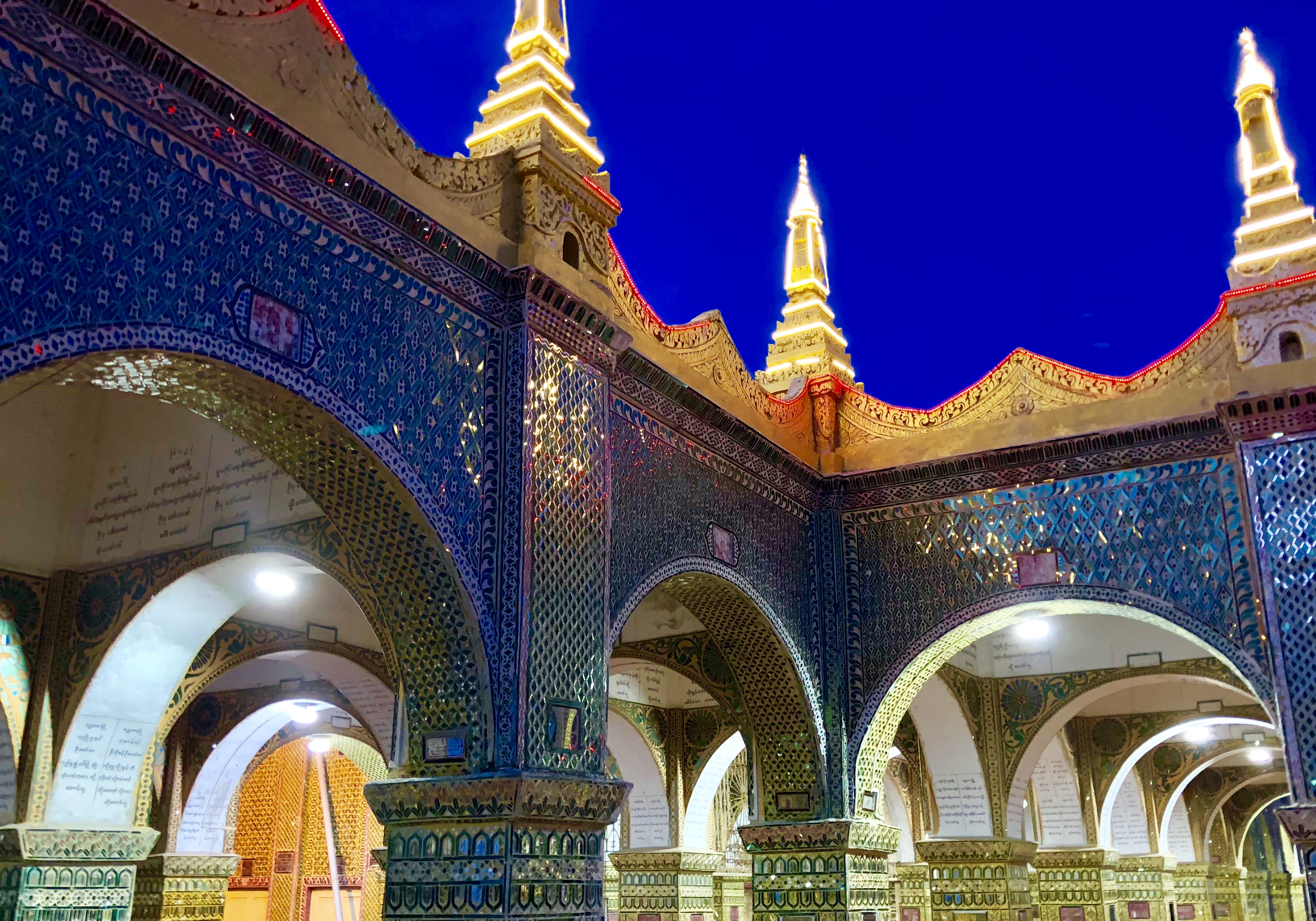
Das Flair Mandalays war auch Inspiration für verschiedenste Kunstschaffende aus aller Welt. Von Brecht bis Sinatra findet die Stadt in Musical- und Songtexten ihre Anerkennung und wird auch heute noch als das Kulturzentrum Myanmars bezeichnet. Es fällt mir schwer zu beschreiben, was genau für mich das Besondere an Mandalay ist. Es fühlt sich ganz anders an als Yangon, obwohl es von Aussen betrachtet und auch geschichtlich gesehen viele Parallelen zwischen beiden Orten gibt. Ich denke, es ist die künstlerisch-kulturelle Schwingung, welche Mandalay unsichtbar, aber subtil eben doch fühlbar, durchströmt und die in mir auf eine sympathische Resonanz trifft. Das Schreiben meines Reiseblogs geht mir hier jedenfalls recht leicht von der Hand. Dies könnte aber auch mit der Dachterrasse des Ostello Bellos zu tun haben. Denn ich konnte auf meiner Reise bereits mehrfach bemerken, dass ich in höher gelegenen Gefilden weitaus produktiver und auch kreativer bin.
The flair of Mandalay was an inspiration for different artists from all over the world too. From Brecht to Sinatra the city got their recognition in a lot of musical and song texts and it’s still referred as the cultural center of Myanmar. My special feelings about Mandalay are difficult to describe. It feels different than Yangon, although both locations are looking similar from an outside view and having some parallels in their history too. May be it’s the artistical and cultural vibration which goes around Mandalay invisible but subtle present, having a resonance with me. My travelblog writings are easy going here, but an influencing factor could be the roof top terrace of the Ostello Bello too. Because at my journey I still noticed several times that I’m more effecient and creative while staying in higher locations.
